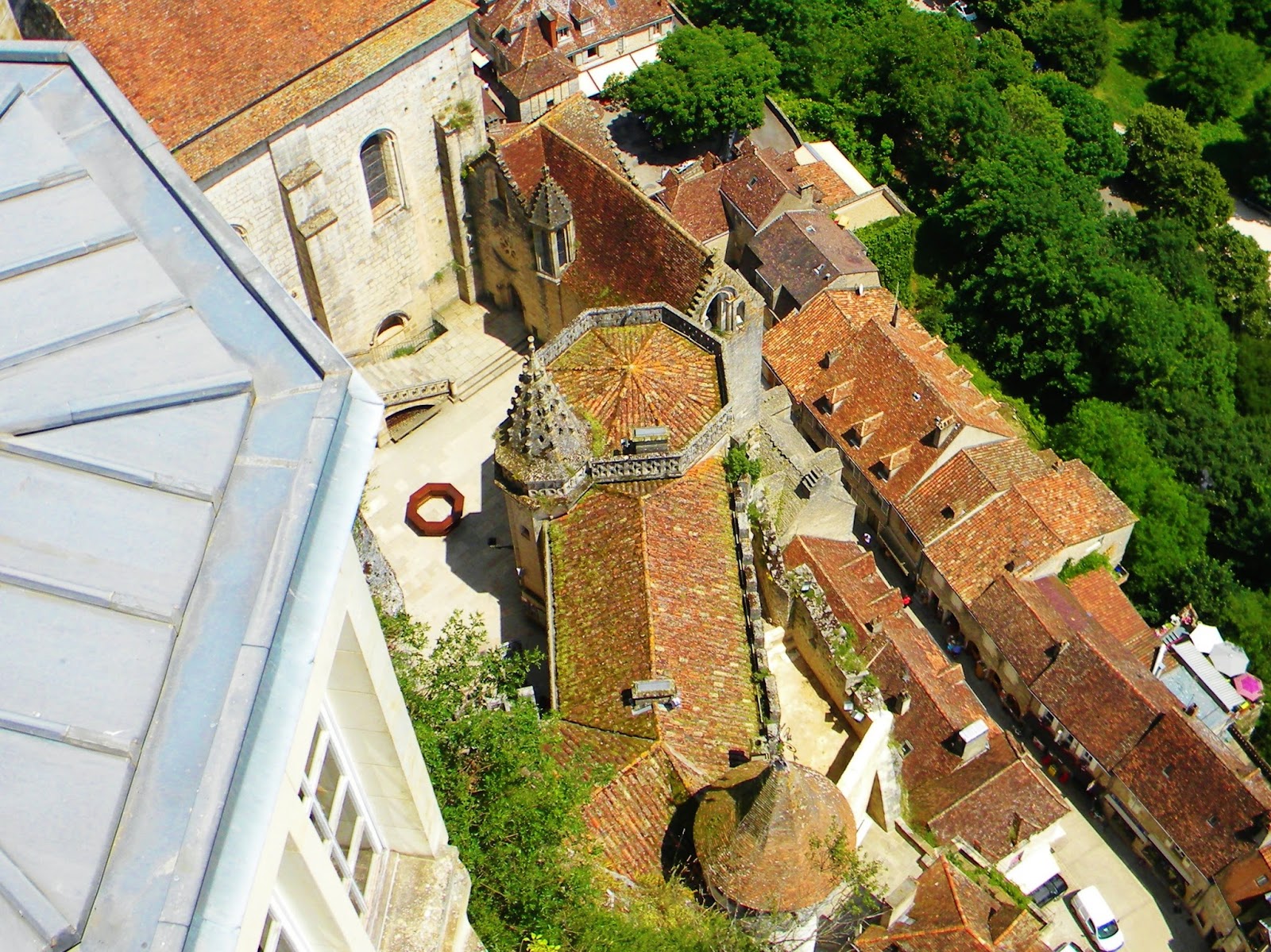This is Dali's take on Saint George killing the dragon, a popular theme in Nuits Saint Georges.
We couldn't help but tour a few churches in France, including the Basilica Notre Dame de Fourviere,
which sits atop the highest point in Lyon. It was built in the late 19th century when the Catholic Church
was trying, unsuccessfully, to reassert itself in public life despite the anti-clerical Third Republic.
It overlooks most of the city, including the magnificent 12th-century St. Jean Cathedral (not shown).
their father's mansion. The brothers invented, among other
things, projected moving pictures. One of their
Left: A large fountain greets
motorists driving into the historic
center of Aix-en-Provence,
a town overrun by tourists.
We stopped here for lunch
on our way from Orange
to Marseilles.
Above and below: Our chambres d'hote (bed and breakfast) in Marseilles had a great view of the Mediterranean
and a pretty nice continental breakfast. The owner asked that we not mention its name online
or on Yelp or Tripadvisor (though that is how we found it) because she prefers
guests to find her by word of mouth.
Below: Jane enjoys a view of the Marseilles harbor. We walked here from the chambres d'hote.
Below: Drinks at an outdoor cafe in Marseilles.
Next round we followed Katy's lead and went with mojitos,
which became the official cocktail of this vacation.
Above: The reflective ceiling of Norman Foster's stainless-steel pavilion at the harbor in Marsaille's old quarter.
Above: Another church. This time it's Notre Dame de la Garde,
built in the 1850s on the highest point in Marseilles by Napoleon III.
It's adorned with hanging planes, warships and other references
to Marseilles' war-torn past.
Above: We walked from our chambres d'hote to this city beach. We were surprised
to find such a pleasant beach in such an urban area -- the water and the sand seemed quite clean.
Above: A diver is in midair at one of the calanques -- small rocky coves -- east of Marseilles.
These swimming spots are hard to reach by land, often requiring long and steep hikes. We saw them by boat.
Right: Our last dinner in Marseilles
was at a pizza restaurant in
Vallon des Auffes, a small
fishing port hidden on the
city's waterfront that looks
like a movie set. Again, we
walked here from our lodgings,
but for the long, uphill trip
back we took a cab.
,,.,.,.
Above: St. Cecile Cathedral in Albi, a small town in the Midi-Pyrenees. The cathedral was built in the
13th century as a show of force by the Catholic Church after wiping out the Cathars, a sect that
the church considered heretical. Its fortress-like exterior, made of red bricks, dominates the town.
Above: The church's interior is a surprising change from the severe exterior. In the 16th century,
Italian artists were brought in to cover almost every surface with religious scenes.
It's said to be the largest group of Italian Renaissance paintings in a French church.
Below: A side chapel in the cathedral.
Above: A garden at the Berbie Palace, the residence of archbishops in Albi and adjacent to the cathedral.
Today the Berbie Palace houses a museum totally focused on Albi's most famous son, the artist
Henry de Toulouse-Lautrec. In addition to his celebrated posters advertising night clubs in Paris,
the museum has many of his early and more serious works.
Above: Rocamadour, a village that clings to a cliff overlooking the Dordogne River.
It's the home of the goat's milk Rocamadour cheese.
Below: A view from the top. The walkway on the left links the chateau at the
top with the church halfway down and the village at the bottom.

Left: Another view from the top of Rocamadour.
Above: Paella for sale in Sarlat-la-Caneda during its Saturday morning market.
This was almost directly in front of our little hotel.
Above: The Sarlat market -- lots of clothing was offered for sale.
Below: The Dordogne region is known for its fois gras, and there was plenty for sale at the Sarlat market.
Above: The main street in La Roque-Gageac borders the Dordogne River.
This picturesque village was a few minutes' drive from Sarlat.
So that (plus what's in the postings below on the Loire Valley, Bordeaux and Paris)
was our trip to France this summer. Paris was very crowded; Lyon, Marseilles and
Bordeaux were surprisingly pleasant; and we got to visit a lot of winery tasting rooms,
even in Burgundy and Bordeaux. We saw more of France in a few weeks than I saw
in the early 1990s when I lived in Paris for a year and a half. Would I go back?
Probably not -- there are so many other places to visit that we've not seen.